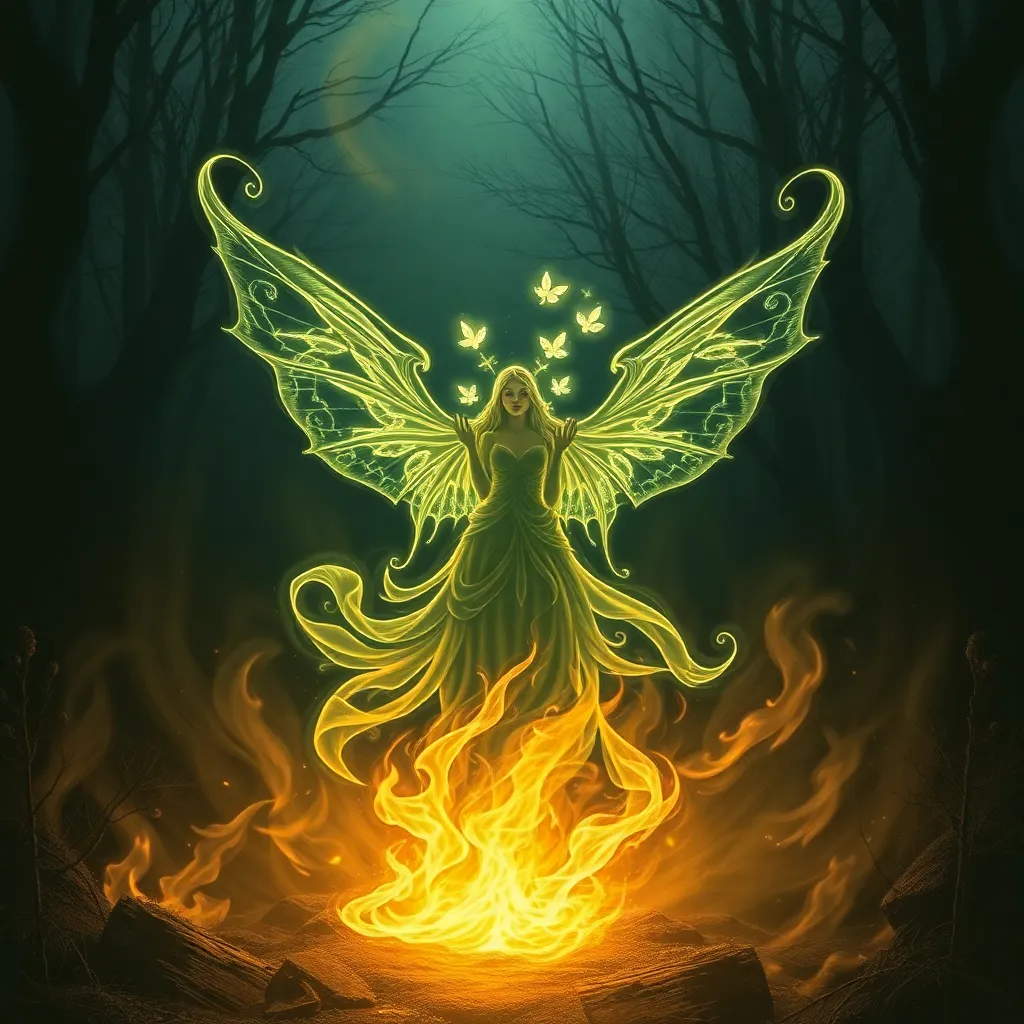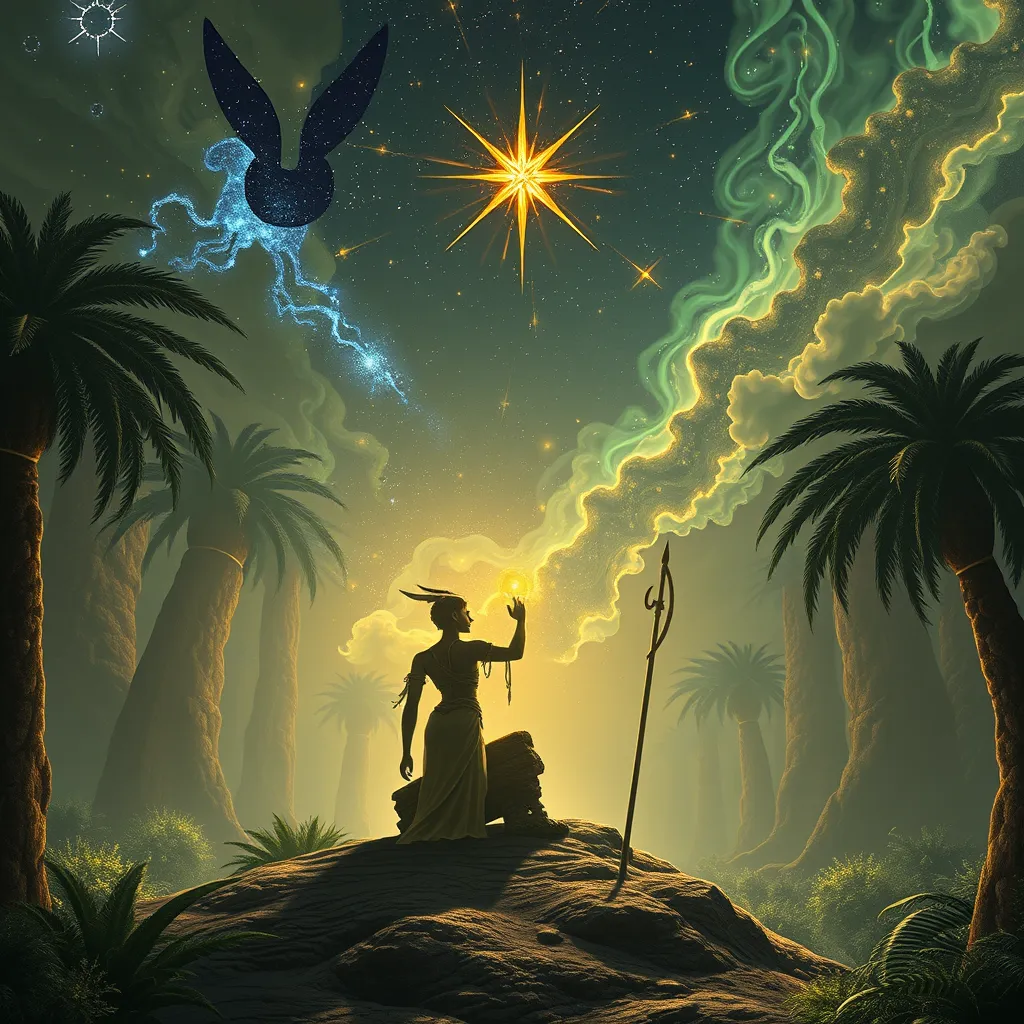The Devil’s Dance: Exploring the Irish Banshee and the Faerie Host
I. Introduction
Irish folklore and mythology are rich tapestries woven with tales of magic, mystery, and the supernatural. These stories often serve as cultural touchstones, reflecting the values, fears, and hopes of the Irish people. Among the most iconic figures within this folklore are the Banshee and the Faerie Host, entities that embody both the beauty and terror of the Irish supernatural landscape.
This article aims to explore the significance of the Banshee and the Faerie Host within Irish culture, examining their origins, characteristics, and the impact they have had on the collective consciousness of the Irish people throughout history.
II. The Banshee: A Protector or a Harbinger?
A. Origins and etymology of the Banshee
The term “Banshee” is derived from the Irish word “bean sí” which translates to “woman of the fairy mound.” This etymology hints at her deep ties to the faerie realm, suggesting that she is both a spirit of the earth and a harbinger of the otherworld. Traditionally, the Banshee is associated with specific families, believed to be their guardian spirit, warning them of impending death.
B. Characteristics and appearance
The Banshee is often depicted as a woman of extraordinary beauty, though she can also appear as an old hag, reflecting the duality of her nature. Common descriptions include:
- Long, flowing hair that she may brush with a silver comb.
- A white or grey gown that symbolizes her ethereal nature.
- Eyes that are both haunting and sorrowful, reflecting her ties to loss.
C. The dual role: guardian of families vs. omen of death
The Banshee serves a dual purpose in Irish folklore. On one hand, she is a guardian spirit, watching over her designated families and providing protection. On the other hand, her mournful wail is a forewarning of death, signaling that a family member may soon pass away. This paradox makes the Banshee a complex figure, revered and feared in equal measure.
III. The Faerie Host: An Enigmatic Realm
A. Definition and descriptions of the Faerie Host
The Faerie Host refers to a collective group of faeries or supernatural beings in Irish mythology. They inhabit a realm parallel to that of humans, often described as beautiful but treacherous. This realm is filled with enchantment, where time behaves differently, and mortals risk being lost forever if they venture too close.
B. Types of faeries in Irish mythology
Irish mythology is populated with various types of faeries, including:
- Leprechauns: Mischievous beings known for hiding their pots of gold.
- Selkies: Shape-shifting creatures that can transform from seals to humans.
- Tuatha Dé Danann: A race of god-like beings who are often considered ancestors of the modern Irish.
C. The connection between the Banshee and the faerie realm
The Banshee is often considered part of the faerie host, indicating her origins in the supernatural world. Her role as a messenger of death aligns her with the faerie realm’s themes of enchantment, danger, and the thin line that separates the living from the dead.
IV. The Banshee’s Wailing: Sounds of Warning
A. Cultural interpretations of the Banshee’s cry
The Banshee’s wail is one of the most chilling aspects of her lore. It is often described as a high, keening sound that echoes through the night. This cry is interpreted as a warning, alerting families to prepare for the death of a loved one. Different regions have their interpretations of this sound, with some describing it as a lament and others as a fierce scream.
B. Anecdotes and folklore surrounding the wail
Throughout history, numerous anecdotes have emerged about the Banshee’s wail. Many families claim to have heard her cry just before a family member passed. These stories often carry a sense of reverence and fear, highlighting the Banshee’s role as both a protector and a harbinger of doom.
C. The psychological impact of the Banshee’s call on families
Hearing the Banshee’s wail can evoke profound feelings of dread and sorrow. For families, it serves as a reminder of mortality and the transient nature of life. This psychological impact can lead to a heightened sense of connection to their ancestors and a deepened understanding of their family history.
V. Rituals and Beliefs Surrounding the Banshee
A. Historical practices to appease or invoke the Banshee
To appease the Banshee, families would often perform rituals, such as leaving offerings of food or drink at the entrance of their homes. These practices were meant to honor her and ensure that she would watch over them rather than bring misfortune.
B. Regional variations in Banshee lore
Across Ireland, beliefs about the Banshee vary significantly. In some regions, she is seen as a benign figure, while in others, she is viewed with trepidation. For instance, in the west of Ireland, she is often associated with the misty hills and is believed to be more active during the night.
C. The role of the Banshee in mourning and funerary customs
The Banshee plays a significant role in mourning practices. Her wail is often incorporated into funerary customs, where families may recount her cries as part of their grieving process. This connection reinforces the idea that death is not an end but a transition, with the Banshee serving as a guide to the afterlife.
VI. The Faerie Host and Human Interaction
A. Encounters between humans and the Faerie Host
Encounters with the Faerie Host are common in Irish folklore, often involving mortals who stumble into their realm. These interactions can range from benevolent to malevolent, reflecting the unpredictability of faerie beings.
B. Common themes in faerie folklore: enchantment and danger
Faerie tales often revolve around themes of enchantment and danger. Humans may be lured by the beauty of the faerie realm, only to find themselves trapped in a world where time flows differently, and the rules of nature do not apply. Such stories serve as cautionary tales, warning against the allure of the supernatural.
C. The concept of ‘the thin veil’ between worlds
The notion of a ‘thin veil’ separating the human realm from the faerie world is a recurring theme in Irish folklore. This veil is especially thin during certain times of the year, such as Samhain, when the boundaries between the living and the dead blur. This concept emphasizes the fragility of existence and the ever-present possibility of crossing into the unknown.
VII. The Modern Interpretation of the Banshee and Faerie Host
A. Influence of the Banshee and faeries in contemporary culture
The Banshee and the faerie host continue to influence contemporary culture, appearing in literature, film, and art. They symbolize the enduring fascination with the mystical and the supernatural, bridging the gap between ancient beliefs and modern storytelling.
B. Representation in literature, film, and art
In recent years, the Banshee has been featured in various forms of media, from films like “The Secret of Kells” to novels that explore the depth of Irish mythology. Artists often depict the ethereal beauty of the faerie host, capturing the enchantment and danger they represent.
C. The resurgence of interest in Irish folklore in the 21st century
As global interest in folklore and mythology grows, Irish tales of the Banshee and faerie host have gained renewed attention. Modern audiences are drawn to the rich symbolism and cultural significance these figures hold, leading to a revival of interest in traditional storytelling methods.
VIII. Conclusion
The Banshee and the Faerie Host are not merely figures of folklore; they are integral components of Irish cultural identity. They encapsulate themes of loss, protection, and the thin line between life and death, resonating deeply within the human experience. As we reflect on their significance, it becomes evident that



